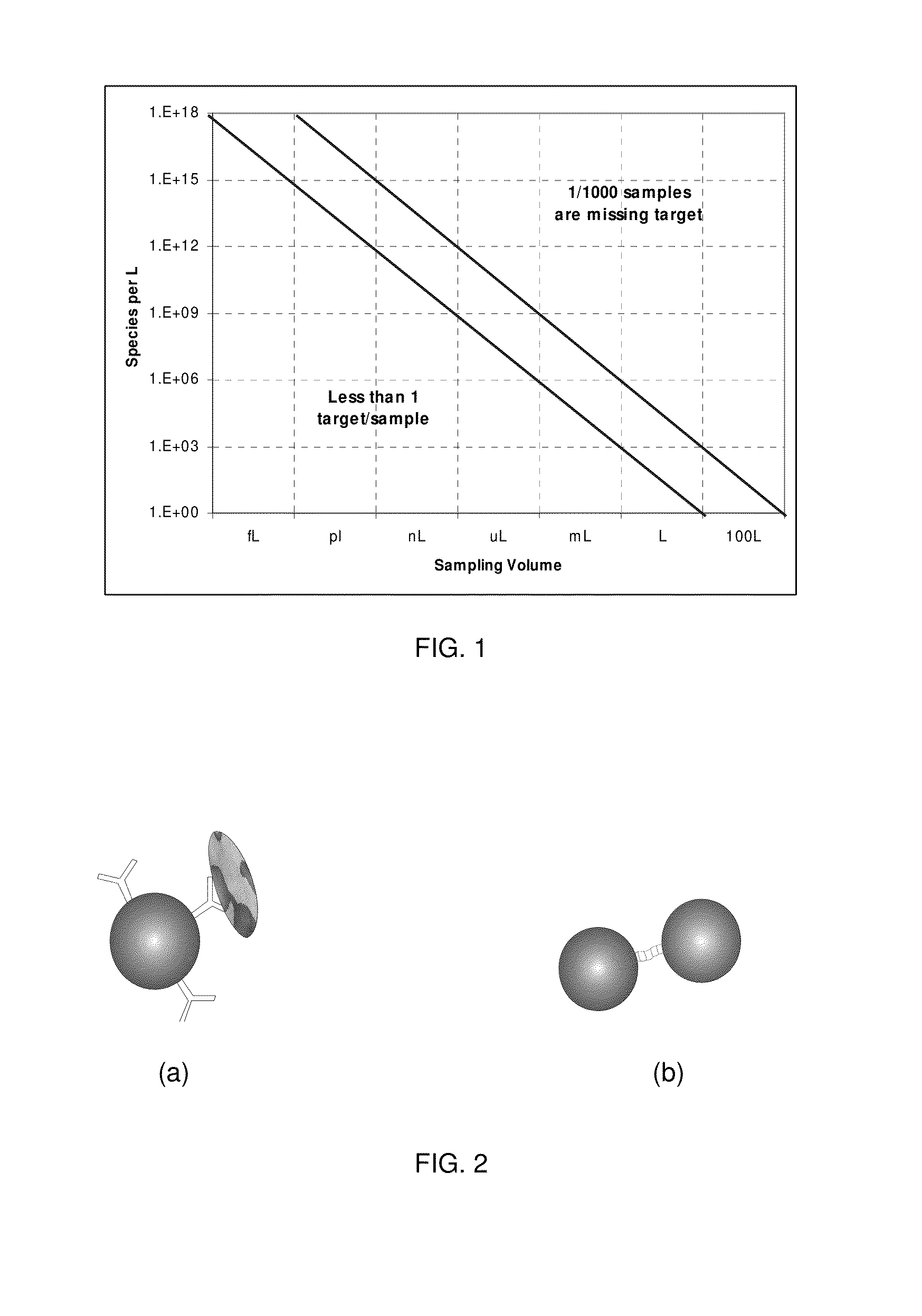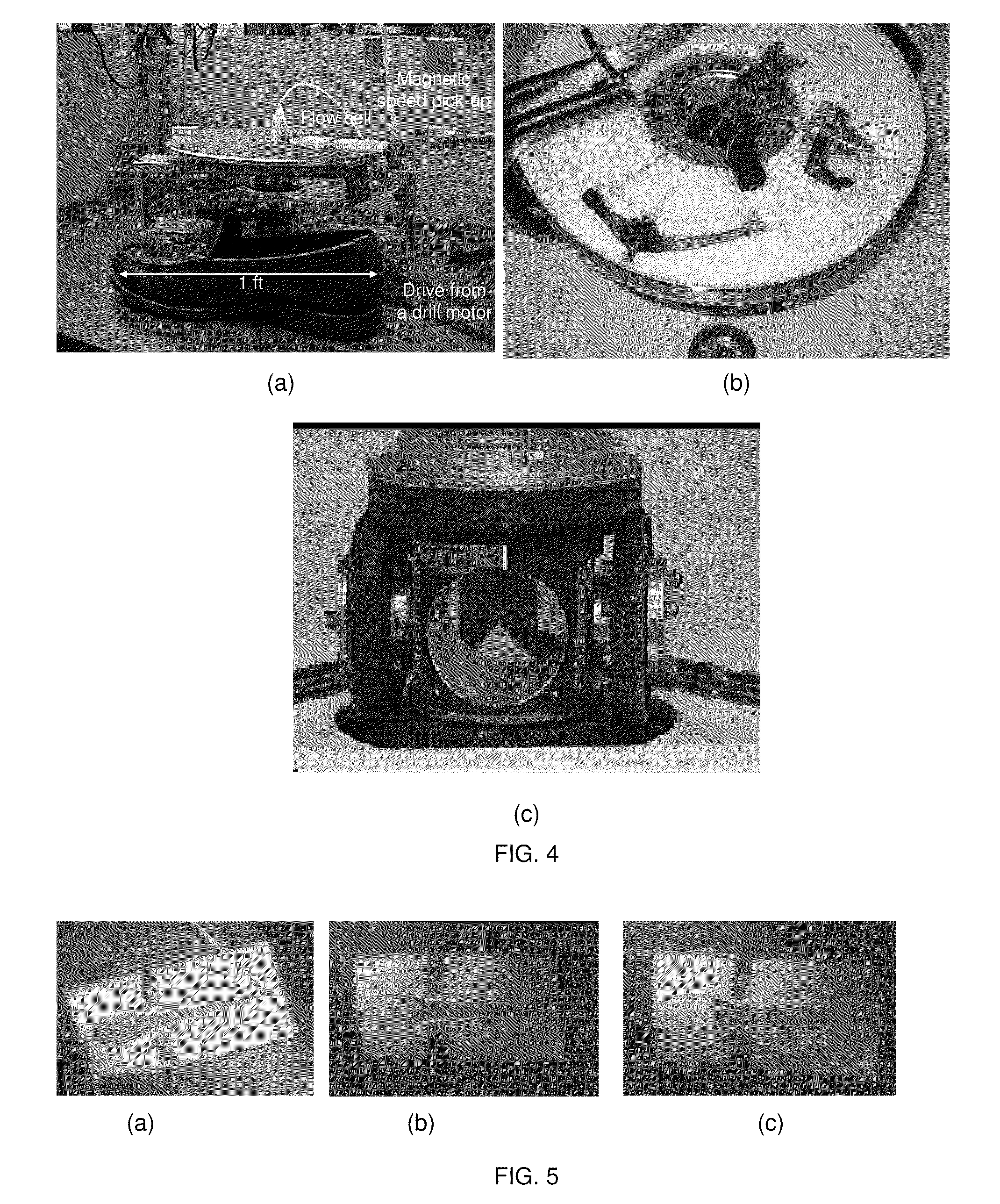Fluidized bed detector for continuous, ultra-sensitive detection of biological and chemical materials
a detector and fluidized bed technology, applied in the field of detectors, can solve the problems of inability to easily recycle, solids or slurries cannot be handled, and achieve the effect of improving specificity
- Summary
- Abstract
- Description
- Claims
- Application Information
AI Technical Summary
Benefits of technology
Problems solved by technology
Method used
Image
Examples
Embodiment Construction
[0030]The Fluidized Bed Detector (FBD) of the present invention is basically a system containing detecting elements wherein the detecting elements are suspended in the system using electrical fields, magnetic fields, acceleration forces, or any combination thereof to retain the particles against a counter-flow of a fluid such as a liquid or gas containing the target of interest. In one embodiment, the system could be a centrifuge (to increase sedimentation rates) using centrifugal force to counterbalance the force of the fluid flow. Detection particles are initially introduced into the analysis chamber by flowing them into the bottom while the chamber is spinning. The forces acting in the FBD can be mathematically modeled with equations 1-3. The particles are retained in the spinning chamber by the balancing of two forces: the centrifugal force (equation 1) (this could also or alternatively be a magnetic or electrical field or a gravitational force), which causes the particles to ex...
PUM
| Property | Measurement | Unit |
|---|---|---|
| distance | aaaaa | aaaaa |
| force | aaaaa | aaaaa |
| forces | aaaaa | aaaaa |
Abstract
Description
Claims
Application Information
 Login to View More
Login to View More - R&D
- Intellectual Property
- Life Sciences
- Materials
- Tech Scout
- Unparalleled Data Quality
- Higher Quality Content
- 60% Fewer Hallucinations
Browse by: Latest US Patents, China's latest patents, Technical Efficacy Thesaurus, Application Domain, Technology Topic, Popular Technical Reports.
© 2025 PatSnap. All rights reserved.Legal|Privacy policy|Modern Slavery Act Transparency Statement|Sitemap|About US| Contact US: help@patsnap.com



